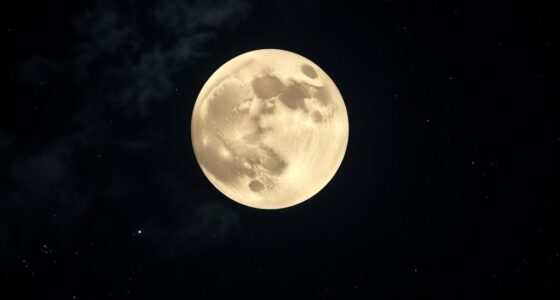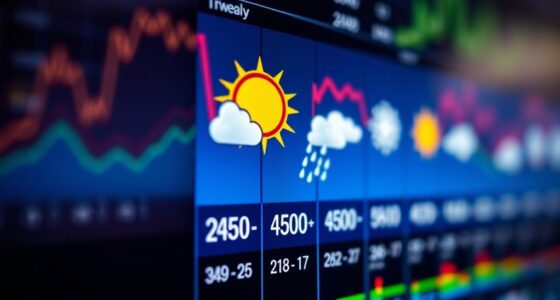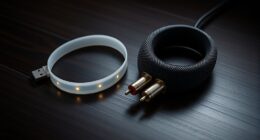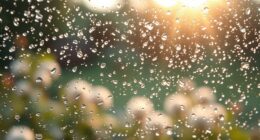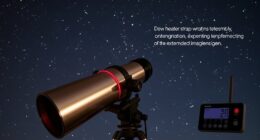The Bortle Scale is a helpful guide, but it’s often misunderstood. Many believe it’s a strict rule for sky quality, but it’s more subjective and depends on local light pollution and atmospheric conditions. Light pollution from cities can hide stars, yet some darker areas still have limitations. For beginners, focusing on nearby dark spots and understanding these myths can boost your stargazing. Keep exploring to uncover practical tips for finding the best views.
Key Takeaways
- The Bortle Scale offers a general, subjective assessment of sky darkness, not a strict measurement.
- Light pollution impact varies locally; darker skies can still be found in areas with high Bortle ratings.
- Prioritize dark sky locations like rural areas and parks over relying solely on Bortle class numbers.
- Atmospheric factors and moon phases significantly influence visibility beyond what the Bortle Scale indicates.
- Use the Bortle Scale as a broad guide, combining it with local knowledge and environmental conditions for best stargazing.
Debunking Common Misconceptions About the Bortle Scale
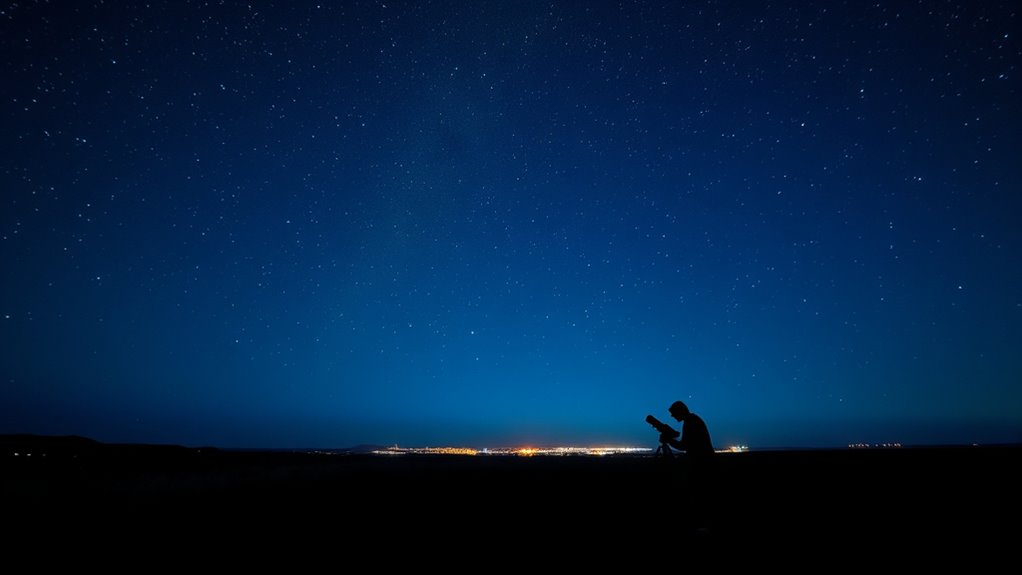
Many people assume the Bortle Scale is a strict, definitive measure of sky quality, but in reality, it’s a more subjective tool that provides a general idea rather than an exact measurement. One common misconception is that urban glow always ruins star visibility, but the scale accounts for how different locations handle skyglow. You might think a high Bortle class indicates complete darkness, yet some areas with minimal urban glow still have limitations. Skyglow misconceptions often lead beginners to dismiss areas that could still offer decent stargazing. Remember, the Bortle Scale helps you gauge sky conditions broadly, but factors like local light pollution levels and atmospheric conditions also influence what you’ll see. Additionally, understanding how light pollution impacts sky visibility can help you better interpret the scale and choose suitable stargazing spots. Don’t rely solely on urban glow assumptions—use the scale as a guide, not an absolute determinant.
The Reality of Light Pollution and Its Impact on Stargazing
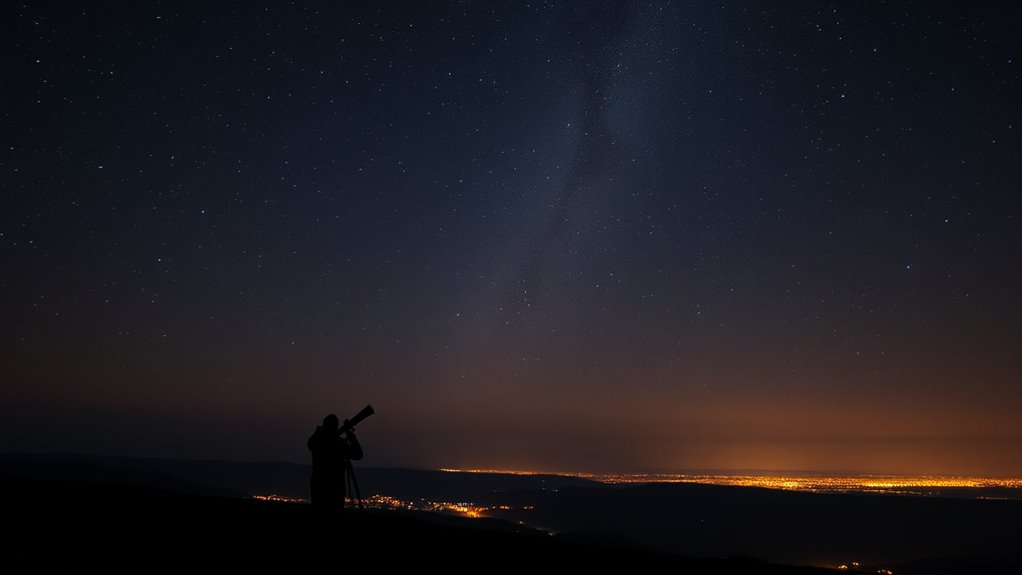
While the Bortle Scale provides a useful overview of sky conditions, understanding the true impact of light pollution on stargazing requires recognizing how widespread and persistent it is. Urban glow from artificial lights creates atmospheric interference, drowning out faint celestial objects. This persistent glow can obscure even bright stars and planets, making deep-sky observations difficult. Here’s a quick comparison:
| Light Pollution Effect | Impact on Stargazing |
|---|---|
| Urban glow | Brightens the night sky, reduces visibility |
| Atmospheric interference | Blurs and dims celestial details |
| Skyglow | Limits the number of visible stars |
| Light trespass | Disrupts night vision and star clarity |
Understanding these effects helps you realize why darker skies matter more than the Bortle number alone. Additionally, light pollution can vary significantly over short distances, so local conditions often have a greater influence on your stargazing experience than the overall Bortle class.
Practical Tips for Finding the Best Viewing Spots Based on the Bortle Scale

To find the best viewing spots based on the Bortle Scale, start by identifying areas with low Bortle numbers, which indicate darker skies. Higher sky quality means less urban darkness and better stargazing conditions. Seek out locations away from city lights, hills, or forests that block light pollution. Use online Bortle scale maps or apps to pinpoint dark sky sites near you.
Consider these tips:
- Seek rural areas with minimal artificial lighting
- Visit local observatories or parks with designated dark zones
- Avoid nights with full moon to maximize dark sky conditions
- Arrive early to settle before the urban darkness encroaches
- Use light pollution filters to enhance sky quality even in semi-urban spots
Frequently Asked Questions
How Does Atmospheric Conditions Affect Bortle Scale Ratings?
Atmospheric conditions directly influence your Bortle scale rating by affecting light pollution and atmospheric clarity. When the air is clear, with minimal haze or moisture, you see darker skies and better star visibility. Conversely, humidity, clouds, and pollution scatter artificial light, making the sky appear brighter and less ideal for stargazing. Consequently, weather and atmospheric clarity are vital in determining your Bortle class on any given night.
Can Urban Areas Ever Achieve Dark Sky Ratings?
Urban areas can achieve darker sky ratings by implementing effective skyglow mitigation strategies and enforcing urban light policies. By reducing unnecessary outdoor lighting, using shielded fixtures, and curbing light pollution, you can improve visibility of faint stars. While complete darkness is tough, these measures help you move toward darker skies, lowering Bortle Scale ratings and making urban stargazing more enjoyable for you.
Is the Bortle Scale Useful for Astrophotography Planning?
The Bortle scale acts like a guiding star for your astrophotography plans, helping you navigate sky glow and light pollution. It shows where the dark skies are, allowing you to choose the best spots for capturing clear images of the night sky. While it’s not perfect, it’s a handy tool to match your equipment with the conditions and avoid wasting time under less-than-ideal conditions.
How Often Do Bortle Ratings Change Over Time?
Bortle ratings can change over time as light pollution trends shift, but they usually do so gradually. Your measurements might vary if you don’t maintain measurement consistency or if nearby light sources alter. To track real changes, keep your observations consistent, using the same methods and tools. Regularly monitoring helps you see if local efforts or urban development impact your sky quality, making your planning more reliable.
Are There Digital Tools to Measure Bortle Scale Accuracy?
Yes, you can use sky quality apps for digital measurement of light pollution, which help estimate your Bortle scale rating more accurately. These tools use your device’s sensors or camera to assess sky brightness, providing real-time data. While they’re useful, remember they offer approximate results. For best accuracy, combine digital measurements with visual observations and local data. This way, you get a clearer picture of your night sky quality.
Conclusion
Understanding the Bortle Scale helps you find clearer skies for better stargazing. Don’t let myths or light pollution myths hold you back—use it as a guide. Imagine a beginner who, after checking the scale, drives just 20 miles away from city lights and spots the Milky Way for the first time. Small steps like this make a big difference. With the right knowledge, you’re closer than ever to discovering the night sky’s true beauty.


